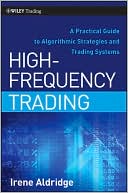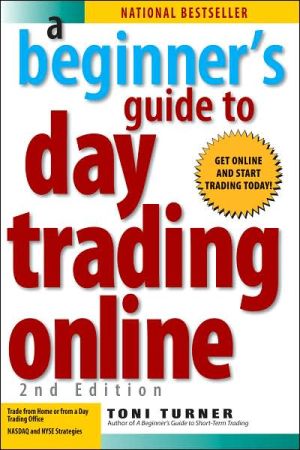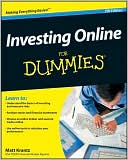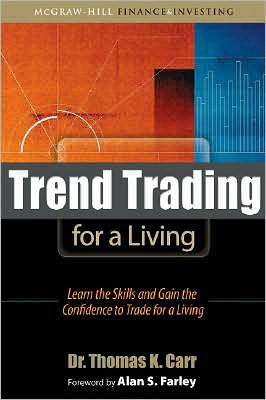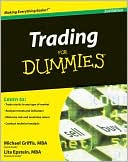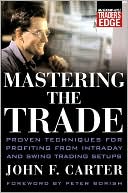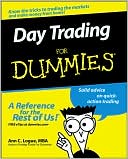High-Frequency Trading: A Practical Guide to Algorithmic Strategies and Trading Systems (Wiley Trading Series)
Search in google:
Financial markets are undergoing rapid innovation due to the continuing proliferation of computer power and algorithms. These developments have created a new investment discipline called high-frequency trading. Despite the demand for information on this topic, little has been published to help investors understand and implement high-frequency trading systems—until now.Written by industry expert Irene Aldridge, High-Frequency Trading offers the first applied "how to do it" manual to building high-frequency systems.Covering sufficient depths of material to thoroughly pinpoint issues at hand, High-Frequency Trading leaves mathematical complexities to their original publications, referenced throughout the book. Page by page, this accessible guide:Discusses the history and business environment of high-frequency trading systemsReviews the statistical and econometric foundations of the common types of high-frequency strategiesExamines the details of modeling high-frequency trading strategiesDescribes the steps required to build a quality high-frequency trading systemAddresses the issues of running, monitoring, and benchmarking high-frequency trading systemsAlong the way, this reliable resource skillfully high-lights numerous quantitative trading strategies—from market microstructure and event arbitrage to deviations arbitrage—and puts the creation and management of portfolios based on high-frequency strategies in perspective.High-frequency trading is a difficult, but profitable, endeavor that can generate stable profits in various market conditions. But solid footing in both the theory and practice of this discipline are essential to success. Whether you're an institutional investor seeking a better understanding of high-frequency operations or an individual investor looking for a new way to trade, this book has what you need to make the most of your time in today's dynamic markets.
Acknowledgments xiChapter 1 Introduction 1Chapter 2 Evolution of High-Frequency Trading 7Financial Markets and Technological Innovation 7Evolution of Trading Methodology 13Chapter 3 Overview of the Business of High-Frequency Trading 21Comparison with Traditional Approaches to Trading 22Market Participants 24Operating Model 26Economics 32Capitalizing a High-Frequency Trading Business 34Conclusion 35Chapter 4 Financial Markets Suitable for High-Frequency Trading 37Financial Markets and Their Suitability for High-Frequency Trading 38Conclusion 47Chapter 5 Evaluating Performance of High-Frequency Strategies 49Basic Return Characteristics 49Comparative Ratios 51Performance Attribution 57Other Considerations in Strategy Evaluation 58Conclusion 60Chapter 6 Orders, Traders, and Their Applicability to High-Frequency Trading 61Order Types 61Order Distributions 70Conclusion 73Chapter 7 Market Inefficiency and Profit Opportunities at Different Frequencies 75Predictability of Price Moves at High Frequencies 78Conclusion 89Chapter 8 Searching for High-Frequency Trading Opportunities 91Statistical Properties of Returns 91Linear Econometric Models 97Volatility Modeling 102Nonlinear Models 108Conclusion 114Chapter 9 Working with Tick Data 115Properties of Tick Data 116Quantity and Quality of Tick Data 117Bid-Ask Spreads 118Bid-Ask Bounce 120Modeling Arrivals of Tick Data 121Applying Traditional Econometric Techniques to Tick Data 123Conclusion 125Chapter 10 Trading on Market Microstructure: Inventory Models 127Overview of Inventory Trading Strategies 129Orders, Traders,and Liquidity 130Profitable Market Making 134Directional Liquidity Provision 139Conclusion 143Chapter 11 Trading on Market Microstructure: Information Models 145Measures of Asymmetric Information 146Information-Based Trading Models 149Conclusion 164Chapter 12 Event Arbitrage 165Developing Event Arbitrage Trading Strategies 165What Constitutes an Event? 167Forecasting Methodologies 168Tradable News 173Application of Event Arbitrage 175Conclusion 184Chapter 13 Statistical Arbitrage in High-Frequency Settings 185Mathematical Foundations 186Practical Applications of Statistical Arbitrage 188Conclusion 199Chapter 14 Creating and Managing Portfolios of High-Frequency Strategies 201Analytical Foundations of Portfolio Optimization 202Effective Portfolio Management Practices 211Conclusion 217Chapter 15 Back-Testing Trading Models 219Evaluating Point Forecasts 220Evaluating Directional Forecasts 222Conclusion 231Chapter 16 Implementing High-Frequency Trading Systems 233Model Development Life Cycle 234System Implementation 236Testing Trading Systems 246Conclusion 249Chapter 17 Risk Management 251Determining Risk Management Coals 252Measuring Risk 253Managing Risk 266Conclusion 271Chapter 18 Executing and Monitoring High-Frequency Trading 273Executing High-Frequency Trading Systems 274Monitoring High-Frequency Execution 280Conclusion 281Chapter 19 Post-Trade Profitability Analysis 283Post-Trade Cost Analysis 284Post-Trade Performance Analysis 295Conclusion 301References 303About the Web Site 323About the Author 325Index 327
